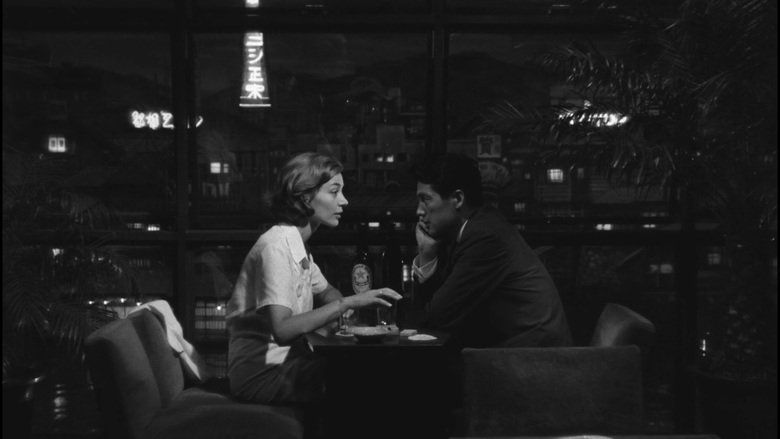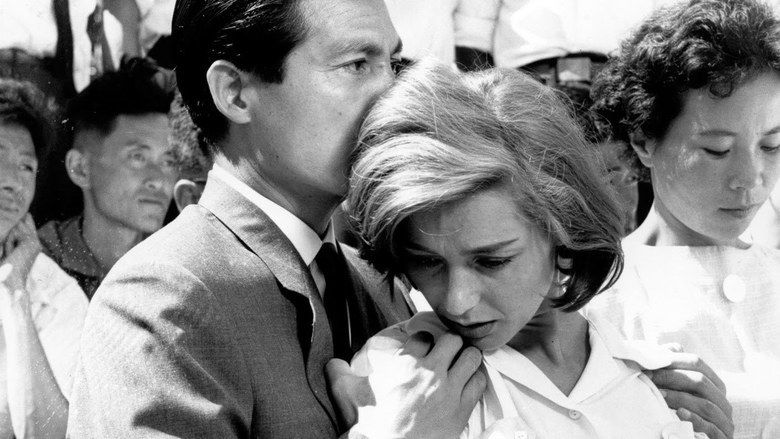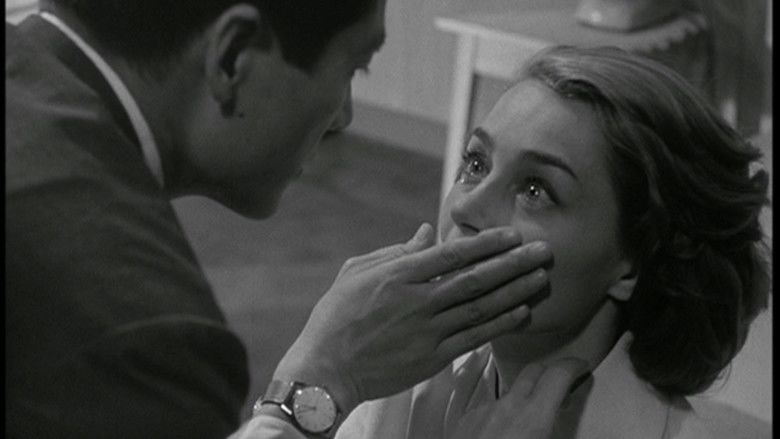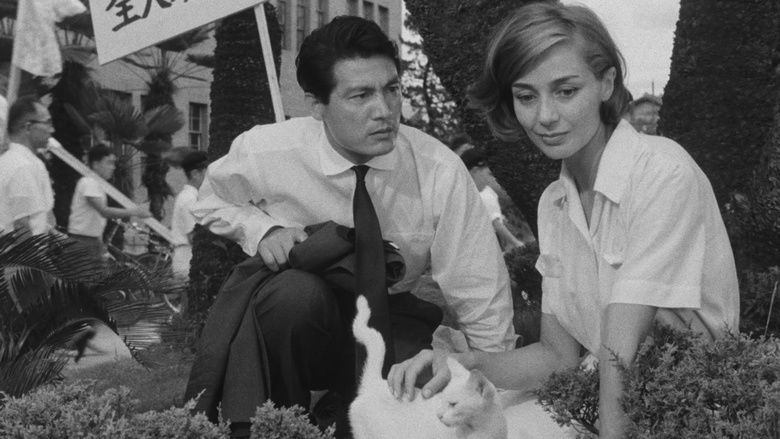Hiroshima mon amour
9 /10 1 Votes
100% Rotten Tomatoes Genre Drama, Romance Duration | 8/10 IMDb | |||||||||||||||||||||||||||||||||
 | ||||||||||||||||||||||||||||||||||
Language FrenchJapaneseEnglish Release date 10 June 1959 (1959-06-10) Awards BAFTA United Nations Award Cast (Lui), Stella Dassas (Mother), Pierre Barbaud (Father), (German Lover), (Elle)Similar movies Everyone Says I Love You , Cloud 9 , Lust, Caution , Bridget Jones's Diary , Bruce Almighty , Much Ado About Nothing | ||||||||||||||||||||||||||||||||||
Hiroshima mon amour rialto pictures trailer
Hiroshima mon amour ([iʁoʃima mɔ̃.n‿amuʁ], Hiroshima My Love; Japanese: 二十四時間の情事 Nijūyojikan'nojōji, Twenty-four-hour affair) is a 1959 drama film directed by French film director Alain Resnais, with a screenplay by Marguerite Duras. It is the documentation of an intensely personal conversation between a French-Japanese couple about memory and forgetfulness. It was a major catalyst for the Left Bank Cinema, making highly innovative use of miniature flashbacks to create a uniquely nonlinear storyline.
Contents
- Hiroshima mon amour rialto pictures trailer
- trailer alain resnais hiroshima mon amour
- Plot
- Cast
- Production
- Reception
- Cultural errors
- Music
- Film
- References

trailer alain resnais hiroshima mon amour
Plot

Hiroshima mon amour concerns a series of conversations (or one enormous conversation) over a 36-hour long period between a French actress (Emmanuelle Riva), referred to as Her, and a Japanese architect (Eiji Okada), referred to as Him. They have had a brief relationship and are now separating. The two debate memory and forgetfulness as She prepares to depart, comparing failed relationships with the bombing of Hiroshima and the perspectives of people inside and outside the incidents. The early part of the film recounts, in the style of a documentary but narrated by the so far unidentified characters, the effects of the Hiroshima bomb on August 6, 1945, in particular the loss of hair and the complete anonymity of the remains of some victims. He had been conscripted into the Imperial Japanese Army, and his family was in Hiroshima on that day.

The film uses highly structured repetitive dialogue, mostly consisting of Her narration, with Him interjecting to say she is wrong, lying or confused, or to deny and contradict her statements with the film's famous line "You are not endowed with memory." Although He disagrees and rejects many of the things She says, he pursues her constantly. The film is peppered with dozens of brief flashbacks to Her life; in her youth in the French town Nevers, she was shamed and had her head shaved as punishment for having a love affair with a German soldier, which she juxtaposes with the loss of the hair "which the women of Hiroshima will find has fallen out in the morning."
Cast

Production

According to James Monaco, Resnais was originally commissioned to make a short documentary about the atomic bomb, but spent several months confused about how to proceed because he did not want to recreate his 1955 Holocaust documentary Night and Fog. He later went to his producer and joked that the film could not be done unless Marguerite Duras was involved in writing the screenplay.

The film was a co-production by companies from both Japan and France. The producers stipulated that one main character must be French and the other Japanese, and also required that the film be shot in both countries employing film crews comprising technicians from each.
Reception
Hiroshima mon amour earned an Oscar nomination for screenwriter Marguerite Duras as well as the Fipresci International Critics' Prize at the 1959 Cannes Film Festival, where the film was excluded from the official selection because of its sensitive subject matter of nuclear bombs as well as to avoid upsetting the U.S. government. It won the prestigious Grand Prix of the Belgian Film Critics Association in 1960. In 2002, it was voted by the international contributors of the French film magazine Positif to be one of the top 10 films since 1952, the first issue of the magazine.
Hiroshima mon amour has been described as "The Birth of a Nation of the French New Wave" by American critic Leonard Maltin. New Wave filmmaker Jean-Luc Godard described the film's inventiveness as "Faulkner plus Stravinsky" and celebrated its originality, calling it "the first film without any cinematic references". Filmmaker Eric Rohmer said, "I think that in a few years, in ten, twenty, or thirty years, we will know whether Hiroshima mon amour was the most important film since the war, the first modern film of sound cinema".
Among the film's innovations is Resnais' experiments with very brief flashback sequences intercut into scenes to suggest the idea of a brief flash of memory. Resnais later used similar effects in The War Is Over and Last Year at Marienbad.
It was shown as part of the Cannes Classics section of the 2013 Cannes Film Festival, as well as having nine screenings at the Harvard Film Archive between November 28 and December 13, 2014.
Cultural errors
In Japan Journals: 1947-2004, film historian Donald Richie tells in an entry for 25 January 1960 of seeing the film in Tokyo and remarks on various distracting (for the Japanese) cultural errors which Resnais made. He notes, for example, that the Japanese-language arrival and departure time announcements in the train scenes bear no relation to the time of day in which the scenes are set. Also, people pass through noren curtains into shops which are supposedly closed. The noren is a traditional sign that a shop is open for business and is invariably taken down at closing time.
Music
Film
References
Hiroshima mon amour WikipediaHiroshima mon amour IMDbHiroshima mon amour Rotten TomatoesHiroshima mon amour themoviedb.org
